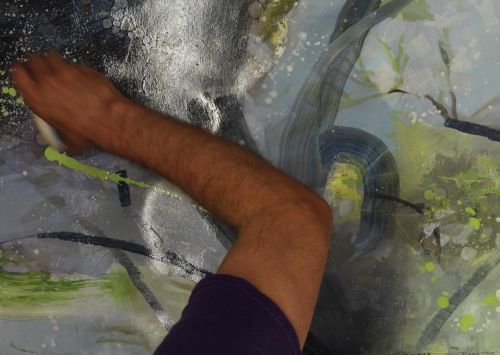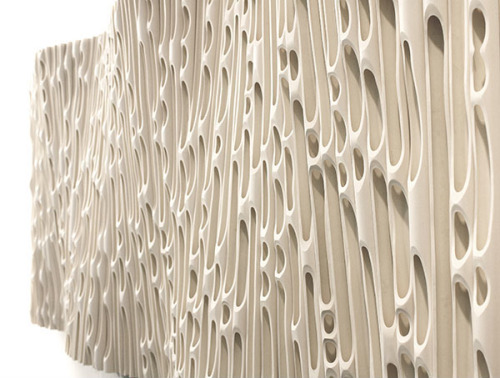#fluidity
Really felt in the flow today. Felt good to be moving paint around — fluid and splashy; thick and chunky. A space coming to life!
Too bad about the glare….
#painting #contemporaryart #fluidity #creativeflow #process
#cocreateresidency @bumarooo @otherwisestudios
https://www.instagram.com/p/CPZMiI0NiUl/?utm_medium=tumblr
Post link
Earlier to Later Heaven: Fugue VI Beyond Descartes - Part 1


(continued from here)
In this post we take a short detour within our current central topic, that of relationship of Earlier Heaven and Later Heaven arrangements of the trigrams. The new material included here grew out of ruminations on the aforesaid primary topic though, and is actually not so much a detour as a preparing the way for what I hope will be the eventual solution of our problem at hand.
Mandalic geometry, as we’ve seen, is fully commensurate with the coordinate system of Descartes, but its principal forebears lie elsewhere. It is derived largely from Taoist and pre-Taoist thought structures, most importantly the I Ching, the earliest strata of which were formed before the separation of rational and irrational thought in the history of human cognition. As a result it is capable of far exceeding the possibilities of the Cartesian coordinate system, a product of the Enlightenment and Age of Rationalism. It offers geometry the possibility of a structural fluidity and a functional variability that Cartesian geometry lacks.[1]
From the very beginning of this project I’ve been much puzzled by the lack in traditional Chinese thought of a symbol corresponding to the zero of the Western number line and number theory.[2] Traditional Asian thought does not uniformly lack a zero symbol.[3] And yet the I Ching and Taoism manage well enough without one, electing to base their numerical relationships instead entirely on combinatorics involving permutations of yinandyang – what we in the West call negativeandpositive – through multiple dimensions. It is an entirely different perspective arising out of a very different worldview.[4]
What Taoism invented in the process was a unique, thoroughly self-consistent brilliant system of logic/geometry/combinatorics which has been masquerading, all these many centuries, as “just a method of divination.”[5] In essence, Chinese thought invented a discrete number system and geometry, one based on vectors rather than scalars, a vector geometry that can be extrapolated to any desired number of dimensions. The I Ching settles for just six, the first whole number multiple of three. That is complicated enough.[6][7]
(continuedhere)
Notes
[1] For one example of the advantages such variability and fluidity offer, in this particular case in creating dynamic, phase-shifting forms of nanomaterials, see here.
[2] For a short history of the concept of zeroseeWho Invented Zero?
[3] The West, after all, derived its zero symbol ultimately via India.
[4] One might well speculate whether the significant root difference in world view between traditional Indian and Chinese thought lay in the fact that Indian mathematicians could have created a Zero out of nothingness (Śūnyatā), a key term in Mahayana Buddhism and also some schools of Hindu philosophy while Taoist thought did not include a concept of nothingness. Instead it conceived of a formlessness prior to manifestation. In Taoist cosmology Taiji is a term for the “Supreme Ultimate” state of undifferentiated absolute and infinite potential, the oneness before duality, from which yinandyang originate. So it might be that lacking a concept of nothingness forestalled invention of a zero symbol. Still, it also allowed creation of an original, unique holistic philosophy of reality, found perhaps nowhere else.
[5] The Russian philosopher, mathematician and authorPeter D. Ouspensky (1878-1947) relates an apocryphal legend regarding the origin of the Tarot, the moral of which has significance also to the history of the I Ching.
[6] In its emphasis on vector analysis and primacy of dimension the philosophy which underlies the I Ching and mandalic geometry shares some characteristics of Clifford algebra.
[7] One of the important things with respect to physics I hope to show with mandalic geometry is that it is possible to construct an integrated geometrical / logical system which is self-sufficient and self-consistent, capable of modeling interactions of subatomic particles of the Standard Model and then some. This goal is, I believe, approximated in mandalic geometry by meticulous coupling of the methodologies of composite dimension and trigram toggling, although it quickly becomes apparent that a system based upon what is after all a relatively small number of dimensions - six in the case in point - becomes vastly complex and difficult to follow, at least initially. One can’t help wondering how physics will be able to correlate all the intricate data resulting from its countless particle accelerator collisions and combine it into a consistent whole without some very fancy mental acrobatics on the part of theoretical physicists. Without a suitable logical scaffold that might take an inordinately long time to achieve.
© 2015 Martin Hauser
Please note: The content and/or format of this post may not be in finalized form. Reblog as a TEXT post will contain this caveat alerting readers to refer to the current version in the source blog. A LINK post will itself do the same. :)
Scroll to bottom for links to Previous / Next pages (if existent). This blog builds on what came before so the best way to follow it is chronologically. Tumblr doesn’t make that easy to do. Since the most recent page is reckoned as Page 1 the number of the actual Page 1 continually changes as new posts are added. To determine the number currently needed to locate Page 1 go to the most recent post which is here. The current total number of pages in the blog will be found at the bottom. The true Page 1 can be reached by changing the web address mandalicgeometry.tumblr.com to mandalicgeometry.tumblr.com/page/x, exchanging my current page number for x and entering. To find a different true page(p) subtract p from x + 1 to get the number(n) to use. Place n in the URL instead of x (mandalicgeometry.tumblr.com/page/n) where
n = x + 1 - p. :)
-Page 277-
“Fixation is the way to death. Fluidity is the way to life.”
—Miyamoto Musashi (宮本武蔵)
Brace yourselves, a friend helped make these for my newest release (Straight Up), and I am having so much fun with them!
Post link







